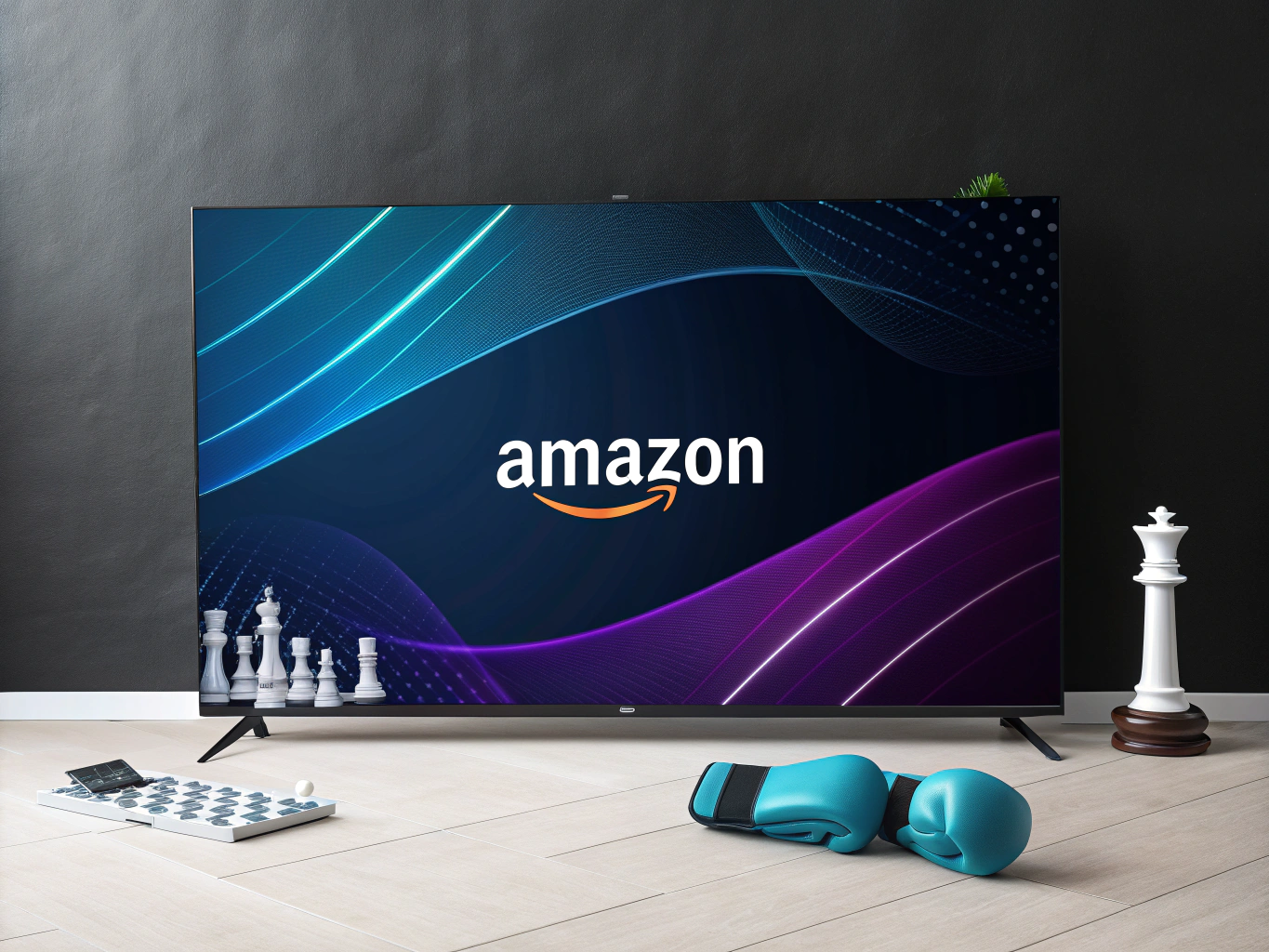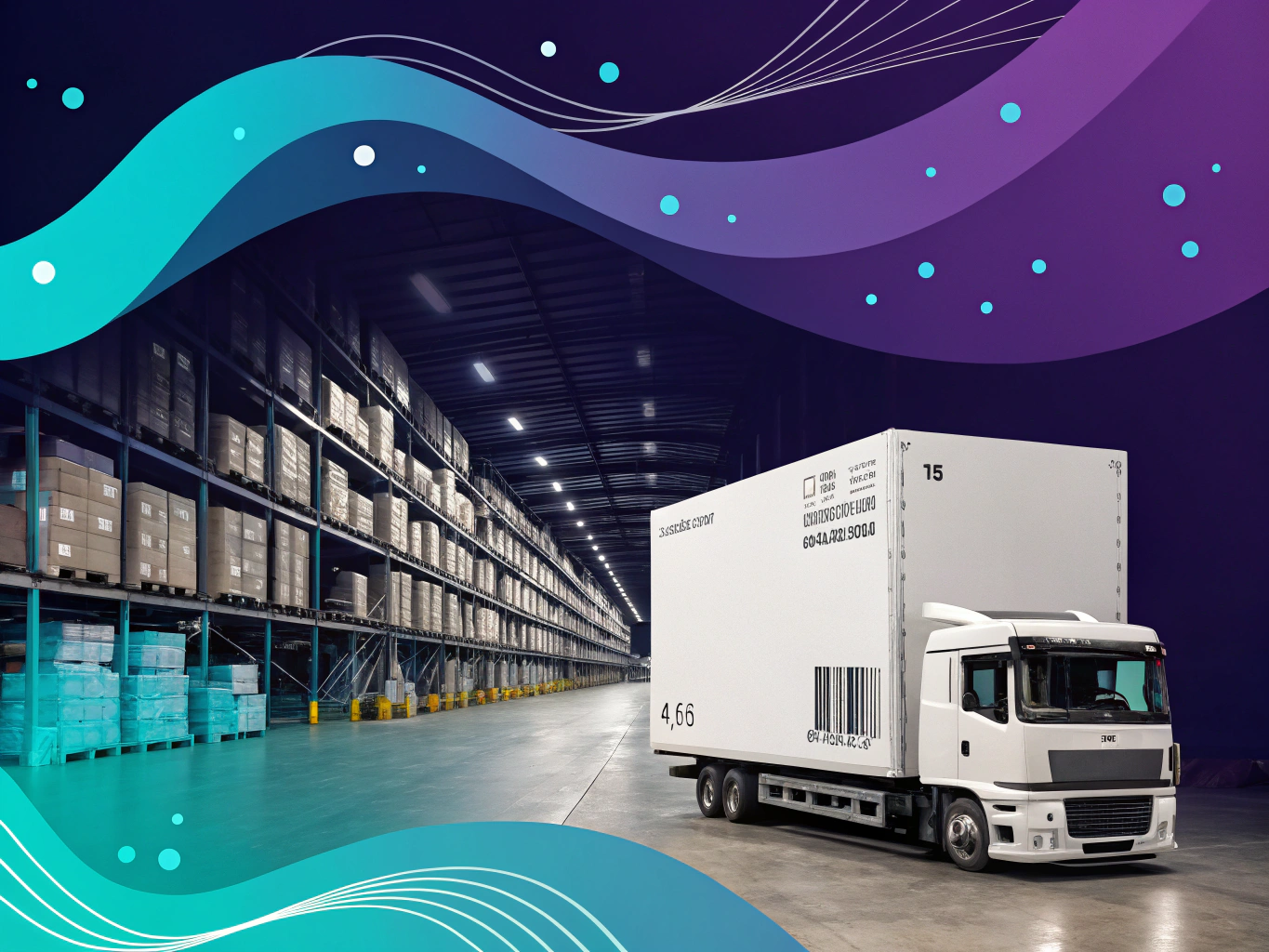Let’s cut through the noise: starting an Amazon business isn’t the get-rich-quick scheme that countless YouTube gurus would have you believe. But it’s also not the impossible mountain that skeptics make it out to be. The truth? It’s somewhere in the deliciously complex middle.

I’ve spent the last decade watching Amazon evolve from a simple marketplace into what I like to call the “Final Boss” of ecommerce. And just like any good video game boss battle, you need the right strategy, tools, and maybe a few power-ups to win.
Whether you’re a brand owner looking to expand your empire or an entrepreneur trying to figure out how to start an Amazon business from scratch, this guide will walk you through everything you actually need to know – no fluff, no BS, just real talk from someone who’s been in the trenches.
Understanding Amazon Business Models: Pick Your Fighter

Remember when choosing a starter Pokémon felt like the biggest decision of your life? Well, picking your Amazon business model is kind of like that – except there’s real money on the line. Let’s break down your options:
Private Label Products: The Long Game
Think of private labeling as creating your own mini-brand within Amazon’s ecosystem. You’re essentially taking existing products, putting your own spin on them, and selling them under your brand name. It’s like being the director of your own movie – you have creative control, but you also need to front the production costs.
Investment needed: $5,000-$25,000 minimum
Risk level: Medium to High
Potential reward: High
Time to profitability: 6-12 months
Retail Arbitrage: The Side Hustle Hero
This is the “buy low, sell high” strategy that turns you into a professional deal hunter. You’re basically that friend who always knows where to find the best sales, except now you’re making money from it. Hit up clearance sales, discount stores, and even garage sales to find products you can flip on Amazon.
Investment needed: $500-$3,000
Risk level: Low to Medium
Potential reward: Medium
Time to profitability: 1-3 months
Wholesale Distribution: The Volume Play
Wholesale is like retail arbitrage’s more sophisticated cousin. Instead of hunting for deals at retail stores, you’re buying directly from manufacturers or authorized distributors. It’s less glamorous than private label but can be incredibly profitable if you nail your numbers. Learn more about selling on Amazon effectively.
Investment needed: $3,000-$10,000
Risk level: Medium
Potential reward: Medium to High
Time to profitability: 3-6 months
Dropshipping: The Low-Risk Entry Point
Ah, dropshipping – the business model that launched a thousand YouTube ads. While it’s often overhyped, dropshipping can be a legitimate way to start selling on Amazon without inventory. Think of it as being a digital middleman: you list products, and when someone buys, your supplier ships directly to the customer.
Investment needed: $500-$2,000
Risk level: Low
Potential reward: Low to Medium
Time to profitability: 1-4 months
Setting Up Your Amazon Business Foundation

Let’s talk about the not-so-sexy but absolutely crucial part of starting your Amazon business – the foundation. Think of it like building a house: you wouldn’t start hanging pictures before laying down solid concrete, right? (Though I’ve definitely been tempted to skip straight to the fun stuff myself.)
Legal Requirements: More Than Just Checking Boxes
Here’s something that keeps surprising new Amazon sellers: you can’t just wake up one morning and start selling without some legal groundwork. I’ve seen too many entrepreneurs rush past this step, only to face headaches later. Trust me, dealing with tax issues or liability concerns after you’re already operational is about as fun as debugging code at 3 AM.
First up: business registration. You’ve got options here – sole proprietorship, LLC, corporation. Most sellers I work with start with an LLC because it offers that sweet spot of liability protection without overwhelming complexity. It’s like having a force field around your personal assets, just in case things go sideways.
Tax considerations are next, and yes, I can hear you groaning from here. But here’s the thing – understanding sales tax nexus isn’t just about compliance; it’s about protecting your future profits. Amazon collects sales tax in most states now, but you still need to register for sales tax permits where required. Think of it as insurance for your business’s future.
Creating Your Amazon Seller Account: The Gateway to Your Empire
Now we’re getting to the good stuff. Setting up your Amazon seller account is like choosing your character class in an RPG – each option (Individual vs. Professional) comes with its own pros and cons. If you’re planning to sell more than 40 items monthly, the Professional account’s $39.99 fee practically pays for itself. Plus, with the right strategy, you can build my Amazon storefront into a fully automated revenue stream by leveraging Amazon’s tools and analytics.
The documentation Amazon requires might seem excessive, but there’s method to their madness. They’re trying to maintain marketplace quality – something that benefits all legitimate sellers. You’ll need:
- Government-issued ID
- Bank account information
- Tax information
- Phone number for verification
Product Research and Sourcing Strategy
This is where the real fun begins – and where many aspiring Amazon entrepreneurs either make it or break it. I’ve seen brilliant product ideas fail because of poor sourcing, and seemingly basic products succeed wildly due to excellent research and sourcing strategy.
Market Research: Your Crystal Ball
Remember when everyone thought fidget spinners would be hot forever? Yeah, me too. That’s why proper market research isn’t just important – it’s essential. Tools like Jungle Scout or Helium 10 are your best friends here, but they’re just tools.
The real magic happens when you combine data with intuition. One way to boost early traction is by enrolling in Amazon’s Vine program, where a Vine customer can leave high-quality reviews that enhance your product’s credibility.
What makes a good product opportunity? Look for items with:
- High demand (1000+ monthly sales)
- Low competition (less than 100 reviews on top listings)
- Healthy profit margins (aim for 30-40% minimum)
- Improvement potential (what can you do better than current offerings?)
Sourcing: Building Your Supply Chain
Here’s where things get really interesting. You’ve got multiple paths to source products, each with its own risk/reward profile. I like to think of it as choosing your adventure:
Private Label Manufacturing: This is like being a movie producer – you’re creating your own brand, controlling the script, but it requires more upfront investment and relationship building with manufacturers. Discover the steps to sell on Amazon successfully.
Wholesale: Think of this as being a movie theater – you’re selling established brands, lower risk, but also lower margins and more competition.
Retail Arbitrage: You’re basically a treasure hunter, finding deals in retail stores and reselling them on Amazon. Lower barrier to entry, but harder to scale.
Amazon FBA Implementation

FBA (Fulfillment by Amazon) is like having a super-powered logistics department at your disposal. It’s not perfect – nothing is – but it’s probably the closest thing to magic in the ecommerce world.
FBA Program Setup: The Nuts and Bolts
Setting up FBA requires attention to detail. Amazon’s requirements for product prep are specific – think of it as sending your kid to a very particular school. Everything needs to be labeled correctly, packaged properly, and shipped according to their guidelines.
The fee structure can seem complicated at first, but here’s the simple version: you pay for storage and fulfillment, but you get Amazon’s world-class logistics network and Prime badge in return. For most products, it’s a no-brainer.
FBA vs. Self-Fulfillment: Making the Choice
Should you use FBA or fulfill orders yourself? Here’s a quick reality check: unless you’ve got a warehouse and fulfillment team ready to go, FBA is probably your best bet when starting out. Yes, the fees can eat into your margins, but the time and headache it saves you is worth its weight in gold.
Consider this: with FBA, you can scale from 10 to 1000 orders per day without changing your operational workflow. Try doing that from your garage.
Remember, though – FBA isn’t a “set it and forget it” solution. You need to manage your inventory levels carefully. Running out of stock is like closing your store during peak shopping hours, and having too much inventory can rack up storage fees faster than a kid in a candy store with your credit card.
Advanced Business Operations for Your Amazon Store
Let’s talk about something that keeps many Amazon sellers up at night – the operational maze of running an ecommerce business. You know what’s funny? We often picture successful Amazon sellers lounging on beaches, checking their phones occasionally while the money rolls in. The reality? Well, it’s a bit more… interesting.
Automation and Tools: Your Digital Army
Remember how I mentioned earlier that AI is like an intern? Well, think of automation tools as hiring a whole team of interns who never sleep, never complain, and (mostly) never make mistakes. These tools aren’t just nice-to-haves anymore – they’re your digital army in the battle for Amazon success.
Here’s what your tech stack should look like:
– Inventory management software (Helium 10 or Jungle Scout)
– Pricing automation tools (Repricer.com is a personal favorite)
– Customer service solutions (Zendesk or Freshdesk)
– Analytics platforms (Google Analytics + Amazon’s built-in tools)
Risk Management: Because Murphy’s Law Loves Amazon Sellers
If there’s one thing I’ve learned from running ProductScope AI and helping countless Amazon sellers, it’s that things will go wrong. It’s not pessimism – it’s reality. And in the Amazon ecosystem, being prepared isn’t just smart – it’s survival.
Your risk management checklist should include:
– Daily account health monitoring
– Weekly policy compliance checks
– Monthly fraud prevention audits
– Quarterly crisis management plan updates
Alternative Ways to Start an Amazon Business

Here’s something most guides won’t tell you: selling products isn’t the only way to start an amazon business. Sometimes, thinking laterally opens up opportunities that everyone else is missing. For example, instead of sourcing physical inventory, you could explore Merch on Demand Amazon, allowing you to sell custom-designed apparel without handling production or shipping.
Amazon Delivery Service Partner (DSP)
Want to know what’s more reliable than trying to guess the next hot product? Delivering them. Amazon’s DSP program is like getting a franchise, but instead of flipping burgers, you’re delivering packages. Initial investment? About $10k-$30k. Potential returns? Six figures annually if you play your cards right.
The M&A Game: Buy Instead of Build
Here’s a wild thought – what if instead of starting from scratch, you bought an existing Amazon business? It’s like skipping the tutorial level in a video game. Sure, it costs more upfront, but you’re buying proven success.
Real Talk: Success Stories and Hard Lessons
I’ve seen Amazon sellers go from garage operations to multi-million dollar exits. But for every success story, there are dozens who quietly packed up shop. The difference? Usually comes down to three things: timing, persistence, and adaptability.
Case Study: The Private Label Pioneer
Take Sarah, one of our ProductScope AI users. She started with $5,000 and one product – bamboo cutting boards. Pretty boring, right? Wrong. She used AI to optimize her listings, automated her inventory management, and within 18 months was doing $50k/month in revenue. The secret? She treated Amazon like a business, not a get-rich-quick scheme.
The Future of Amazon Business
Let’s get real about where this is all heading. The days of throwing random products on Amazon and hoping for the best are over. The future belongs to sellers who can leverage technology, understand their numbers, and build actual brands.
Building Your Amazon Support Network
Success on Amazon isn’t a solo sport. You need a network – not just for support, but for intelligence gathering and opportunity spotting.
Educational Resources That Actually Matter
Skip the gurus selling $997 courses about their “secret system.” Instead, focus on:
– Amazon Seller University (it’s free and actually useful)
– Industry conferences (yes, they’re expensive, but worth it)
– Mentorship programs (find someone who’s where you want to be)
– Community forums (Reddit’s r/FulfillmentByAmazon is gold)
Final Thoughts on Starting Your Amazon Journey
Starting an Amazon business in 2024 isn’t just about selling stuff online – it’s about building a real business that can thrive in an increasingly competitive marketplace. Whether you choose to start an Amazon FBA business, explore dropshipping, or dive into private labeling, success comes down to execution.
The tools are better than ever. The information is more accessible than ever. But paradoxically, it’s also harder than ever to succeed. Why? Because everyone has access to the same tools and information. Your edge will come from how you use them.
Remember: Amazon isn’t just a marketplace – it’s a platform for building real businesses. Treat it with respect, approach it with a strategy, and be prepared to adapt as the landscape changes. And most importantly, don’t try to do everything alone. Use tools, build systems, and create processes that can scale.
Whether you’re starting an amazon delivery business, exploring how to sell products on amazon, or considering how to start an amazon dropshipping business, the principles remain the same: start small, think big, and always keep learning.
The ecommerce world isn’t waiting for anyone. So what’s your next move going to be?
👉👉 Create Photos, Videos & Optimized Content in minutes 👈👈
Related Articles:
- How to Open Amazon Seller Account: Beginner’s Guide 2024
- How to Sell Stuff on Amazon: Beginner’s Guide 2024
- How to Make Money on Amazon: 5 Proven Methods for 2024
Frequently Asked Questions
How to start an Amazon business?
To start an Amazon business, begin by selecting a niche or product that you are passionate about and that has market demand. Next, create a professional seller account on Amazon, which involves providing your business information and payment details. Once your account is set up, source or create your products, and list them on Amazon with optimized titles, descriptions, and images to attract potential buyers.
Finally, promote your listings through Amazon’s advertising options and manage customer service to build a positive reputation.
How to start an ecommerce business on Amazon?
Starting an ecommerce business on Amazon involves researching and selecting a profitable product to sell. After identifying your product, register for an Amazon Seller Central account and choose between an individual or professional selling plan. List your products with compelling descriptions and high-quality images, and consider using Fulfillment by Amazon (FBA) to handle storage, packing, and shipping.
Focus on marketing your products through Amazon’s advertising tools and maintain excellent customer service to drive growth and success.
How to start an Amazon FBA business?
To begin an Amazon FBA business, first conduct thorough market research to find a product with high demand and low competition. Set up an Amazon Seller Central account and choose the FBA option to have Amazon handle storage, packing, and shipping. Source your products from reliable suppliers and send your inventory to Amazon’s fulfillment centers.
Optimize your product listings and use Amazon’s marketing tools to increase visibility and sales while focusing on customer service to foster a positive seller rating.
How to start an Amazon delivery business?
Starting an Amazon delivery business involves applying to the Amazon Delivery Service Partner (DSP) program, where you can run your own package delivery business with Amazon’s support. You’ll need to meet Amazon’s requirements, including a strong credit history and the ability to invest in a fleet of delivery vehicles. Amazon provides training, technology, and support to help you manage your team and operations effectively. This opportunity allows you to deliver packages for Amazon in your local area with the potential for growth and profitability.
How to start an Amazon dropshipping business?
To start an Amazon dropshipping business, find a reliable supplier who is willing to ship products directly to customers on your behalf. Set up an Amazon Seller Central account and list the supplier’s products, ensuring that your listings are accurate and appealing. Focus on marketing your listings to reach a broader audience while managing orders and customer interactions efficiently. Keep a close watch on inventory levels and work closely with your supplier to ensure timely fulfillment and maintain customer satisfaction.
About the Author
Vijay Jacob is the founder and chief contributing writer for ProductScope AI focused on storytelling in AI and tech. You can follow him on X and LinkedIn, and ProductScope AI on X and on LinkedIn.
We’re also building a powerful AI Studio for Brands & Creators to sell smarter and faster with AI. With PS Studio you can generate AI Images, AI Videos, Chat and Automate repeat writing with AI Agents that can produce content in your voice and tone all in one place. If you sell on Amazon you can even optimize your Amazon Product Listings or get unique customer insights with PS Optimize.
🎁 Limited time Bonus: I put together an exclusive welcome gift called the “Formula,” which includes all of my free checklists (from SEO to Image Design to content creation at scale), including the top AI agents, and ways to scale your brand & content strategy today. Sign up free to get 200 PS Studio credits on us, and as a bonus, you will receive the “formula” via email as a thank you for your time.
